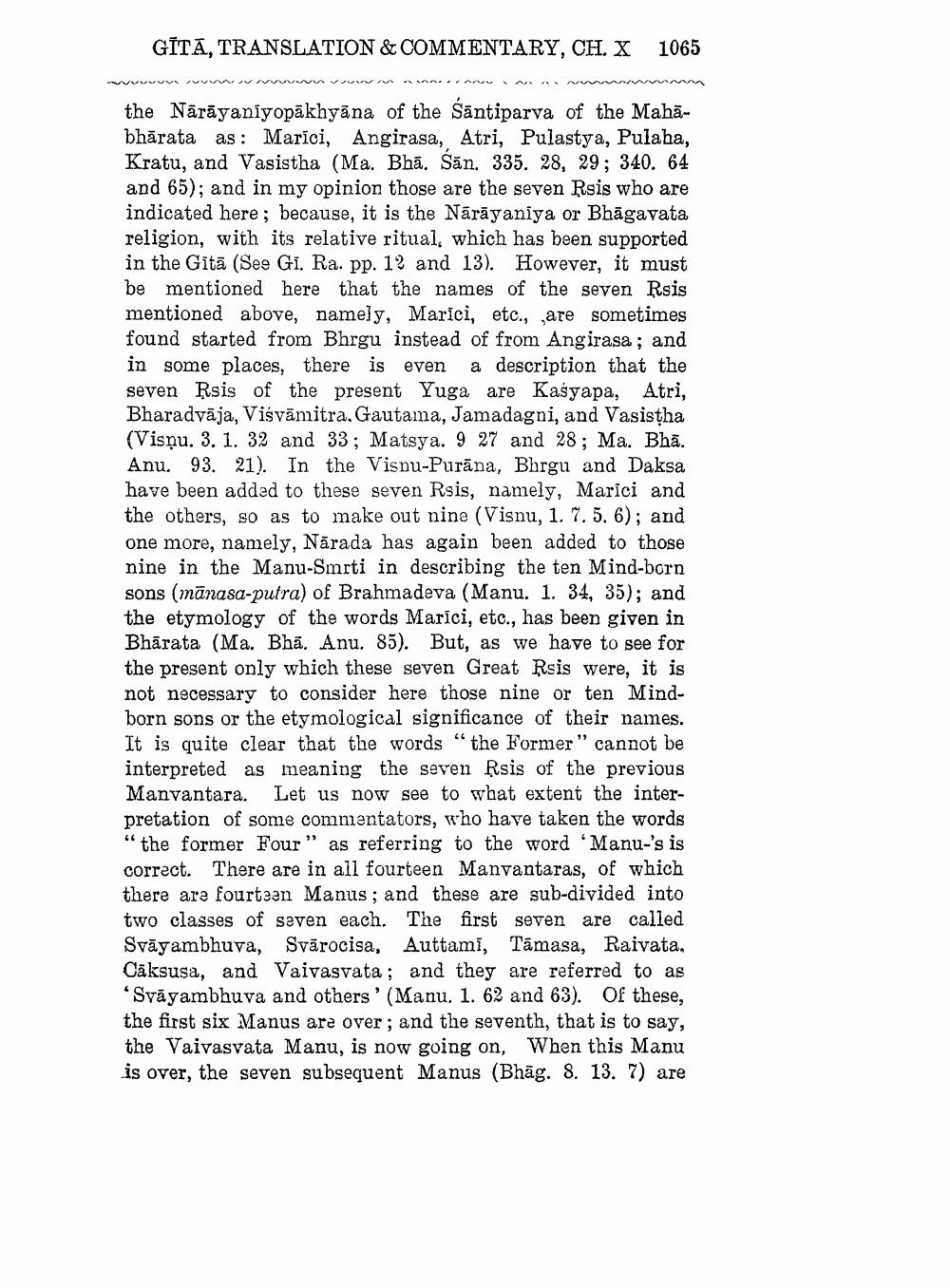________________
GĪTĀ, TRANSLATION & COMMENTARY, CH. X
1065
the Nārāyanıyopākhyāna of the śāntiparva of the Mahābhārata as: Marici, Angirasa, Atri, Pulastya, Pulaba, Kratu, and Vasistha (Ma. Bhā. Sān. 335. 28, 29; 340. 64 and 65); and in my opinion those are the seven Rsis who are indicated here; because, it is the Nārāyaniya or Bhāgavata religion, with its relative ritual, which has been supported in the Gita (See Gi. Ra. pp. 12 and 13). However, it must be mentioned here that the names of the seven Rsis mentioned above, namely, Marici, etc., are sometimes found started from Bhrgu instead of from Angirasa; and in some places, there is even a description that the seven Rsis of the present Yuga are Kasyapa, Atri, Bharadvāja, Viśvāmitra, Gautama, Jamadagni, and Vasistha (Visņu. 3. 1. 32 and 33; Matsya. 9 27 and 28; Ma. Bhā. Anu. 93. 21). In the Visnu-Purāna, Bhrgu and Daksa have been added to these seven Rsis, namely, Marici and the others, so as to make out nine (Visnu, 1. 7.5. 6); and one more, namely, Nārada has again been added to those nine in the Manu-Smrti in describing the ten Mind-born sons (mānasa-putra) of Brahmadeva (Manu. 1. 34, 35); and the etymology of the words Maríci, etc., has been given in Bhārata (Ma. Bhā. Anu, 85). But, as we have to see for the present only which these seven Great Rsis were, it is not necessary to consider here those nine or ten Mindborn sons or the etymological significance of their names. It is quite clear that the words "the Former" cannot be interpreted as meaning the seven Rsis of the previous Manvantara. Let us now see to what extent the interpretation of some commentators, who have taken the words "the former Four" as referring to the word 'Manu-'s is correct. There are in all fourteen Manvantaras, of which there are fourteen Manus; and these are sub-divided into two classes of saven each. The first seven are called Svāyambhuva, Svārocisa, Auttami, Tāmasa, Raivata, Cāksusa, and Vaivasvata; and they are referred to as
Syāyambhuva and others' (Manu. 1. 62 and 63). Of these, the first six Manus are over; and the seventh, that is to say, the Vaivasvata Manu, is now going on. When this Manu is over, the seven subsequent Manus (Bhāg. 8. 13. 7) are




